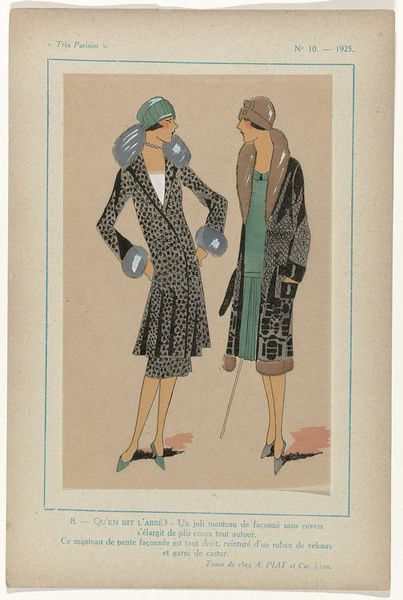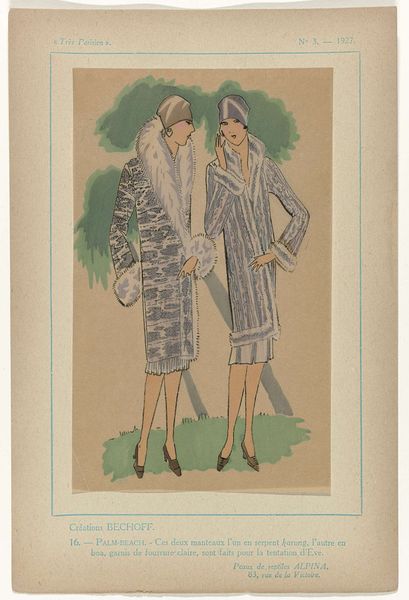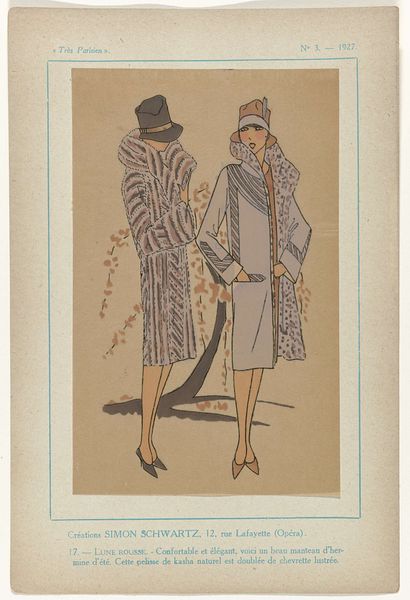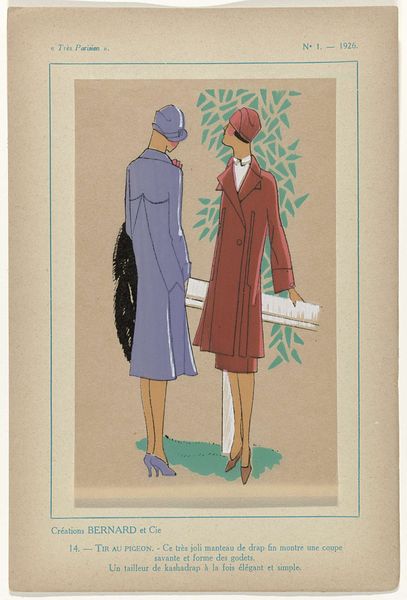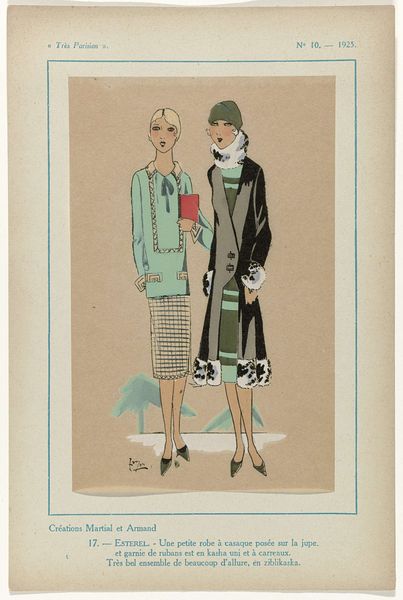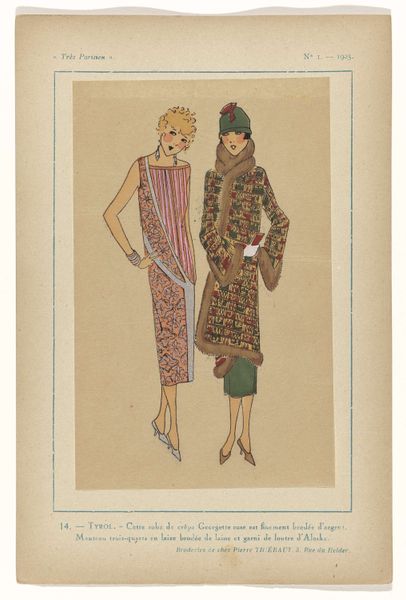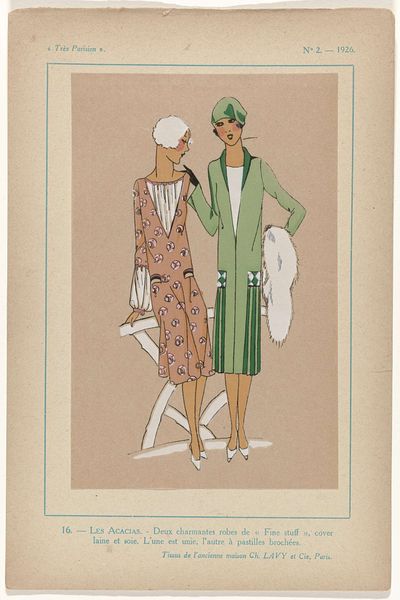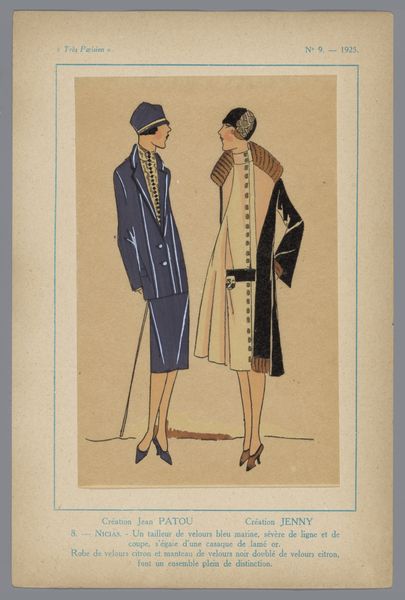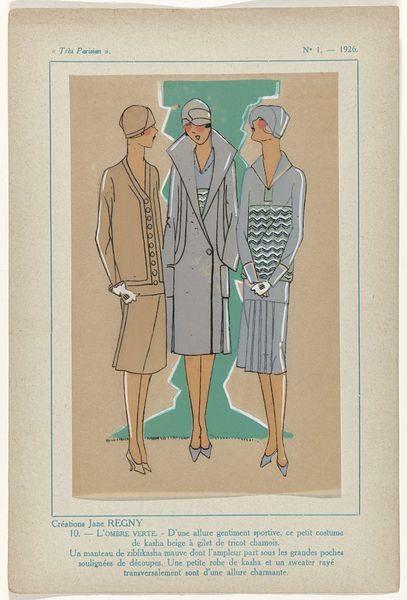
drawing, paper, watercolor
#
portrait
#
art-deco
#
drawing
#
paper
#
watercolor
#
historical fashion
#
traditional style
#
watercolour illustration
#
genre-painting
#
watercolor
Dimensions: height 195 mm, width 120 mm, mm
Copyright: Rijks Museum: Open Domain
Curator: Here at the Rijksmuseum, we have G-P. Joumard’s "Trés Parisien, 1926, No. 2, Pl. 17: - A LA DÉCOUVERTE,” created in 1926 using watercolor and drawing on paper. What's your immediate impression? Editor: There's an interesting contrast in textures right off the bat. The flatness of the medium juxtaposed with the implied textures of the textiles—a very distinct and, I must say, captivating interplay. Curator: Indeed, the formal arrangement lends itself well to semiotic interpretation. Note the geometric patterns on the coats; the one on the left showcases a rigorous grid, while the other adopts a more fluid, vertical linearity. Editor: That visual distinction also speaks to the societal climate of the time, doesn’t it? Fashion, particularly in the '20s, became a powerful mode of expressing modernity and shifting gender roles. The coats almost resemble architectural facades. Curator: Precisely. They could represent a move towards abstraction and industrial aesthetics that were taking hold then. Consider too, the deliberate stylization. The figures are presented not as individuals but as archetypes of Parisian chic. The composition has clearly defined the structural elements of the overall piece. Editor: But isn't the context just as crucial here? "Trés Parisien," already tells us something—likely a fashion plate from a magazine aimed at an emerging consumer culture. The light touch, the soft color palette, it's all engineered to entice. Curator: From a purely structuralist standpoint, though, we can see how the limited palette and recurring motifs create a harmonious visual language. These figures and their geometries echo through a period of broader experimentation with visual grammars, we could go even further… Editor: Hold on—don't you think focusing solely on form eclipses its public role? These images were circulating and actively shaping perceptions of women, fashion, and, frankly, aspiration. It would be impossible to fully discuss without social context, wouldn’t you agree? Curator: I concede that both social and aesthetic considerations converge in this artwork. Studying art from only one approach may render the information gleaned myopic or worse; entirely dismissive of historical context, material production or its lasting impact. Editor: Agreed. So, "Trés Parisien" then seems not only a visual delight but a complex artifact reflecting early twentieth-century society’s ambitions. Curator: Yes, this careful rendering is just the starting point; it invites us to explore the dynamic interplay between art, design, and cultural values, all intertwined in its seemingly simple surface.
Comments
No comments
Be the first to comment and join the conversation on the ultimate creative platform.
